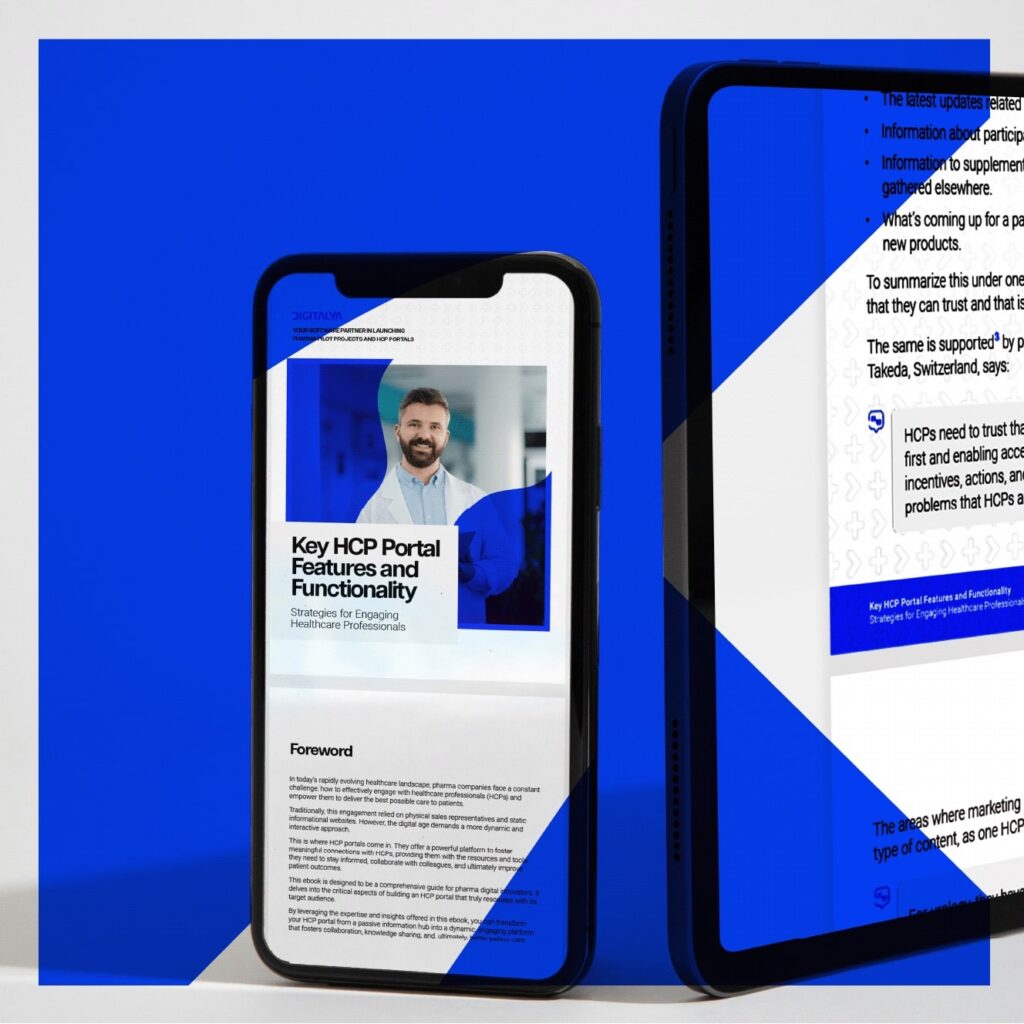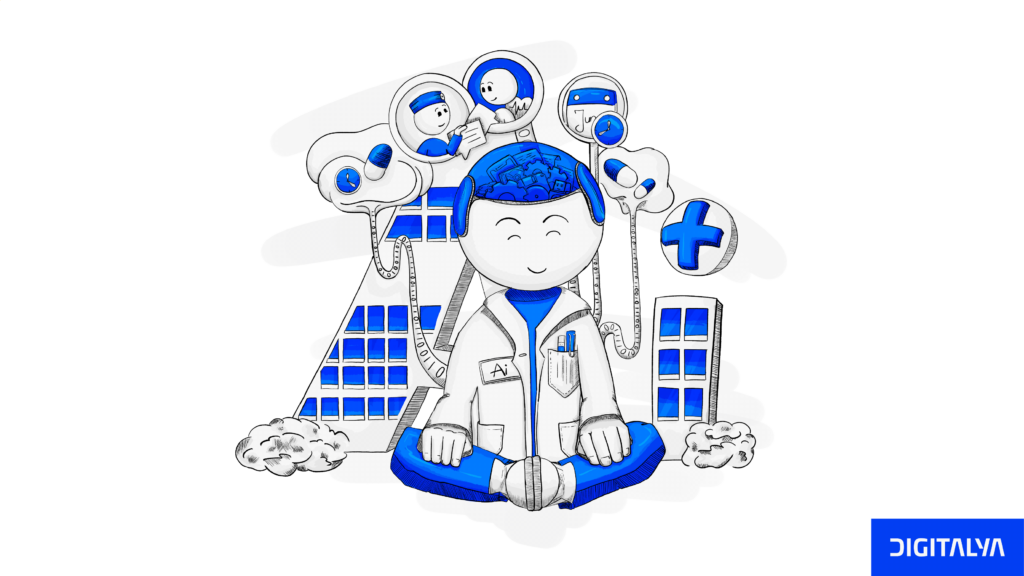Healthcare services strive to provide care to people when they are unwell and assist them in staying well. Implementing system changes and practices is crucial to improve safety at all levels of health care.
Healthcare systems are complicated and involve multiple stakeholders and providers. Patients have an essential role as co-producers of their health, representing a consistent factor in the care pathway. They also hold crucial information to improve processes, systems, and policies.
For a long time, the healthcare industry has been partnering with technology to provide better customer care – especially during the pandemic. As a result, both times and treatments have changed, and consumer behavior has transformed.
1. Introduction
1.1 Importance of patient engagement in healthcare
Patient engagement refers to the active involvement of patients in their own healthcare. It can lead to better health outcomes, improved customer satisfaction with care, and even more efficient use of resources.
There are various definitions of patient engagement, but all revolve around the same theme: encouraging patients to be co-producers of health.
Engaging patients in their own care includes understanding their conditions and treatments and encouraging them to take a more active role in managing their health. This results in better adherence to treatment plans, reformed health behaviors, improved communication between health providers and patients, and improved customer relationship management.
Also, paying attention to patient engagement will beneficially affect trust and communication between patients and their health providers and allow users to control their health journey.
Patient engagement is recognized as a part of healthcare and an important component of safe people-centered care. It also promotes the idea of mutual accountability and understanding between patients and healthcare providers.
In a study from 2013, about 60,000 patients were divided into two groups. The first group received the usual support from their health providers, whereas the second group received enhanced support.
For the patients that received enhanced support, the following results have been highlighted:
- Total medical costs were reduced by 5.3%
- Patient admissions lowered by 12.5%
- ER visits were reduced by 2.6%
- The number of surgeries dropped by 9.9%
- The number of heart surgeries lowered by 10.9%
Looking at these numbers, it’s clear that patient engagement can positively impact healthcare costs and patient outcomes.
1.2 Importance of omnichannel technology
In the healthcare industry, customers are increasingly comfortable sharing their information. This is possible because of wearable devices that collect health-related data. Because of this, patients expect a more flexible, digitally enabled delivery of their care.
This is not a new trend, but the COVID pandemic accelerated it exponentially. However, many systems aren’t leveraging data analytics and the available algorithms to exploit this situation.
Data analytics is crucial in providing valuable information to healthcare professionals and decision-makers to enable them to create viable strategies and better digital experiences. Converting this data into actionable information allows healthcare organizations to adapt their delivery model according to consumer behavior.
But implementing an omnichannel strategy is about more than just data management.
Omnichannel technology provides customers with a seamless, integrated, consistent experience across all communication channels. This includes online and offline channels, mobile devices, and social media.
This approach to patient engagement allows healthcare companies to reach their customers where they are and how they prefer to interact, thus creating personalized and convenient customer experiences.
Additionally, omnichannel technology enables healthcare companies to gather information from all customer touchpoints, thus providing a comprehensive view of the customer journey. All this data can be used in marketing campaigns, to improve customer service processes, and even in product development.
Another important aspect of omnichannel technology is increased customer loyalty, satisfaction, and lifetime value by providing a seamless, consistent, personalized experience. In the long run, this leads to increased brand recognition, customer trust, and a competitive advantage in a rapidly evolving digital landscape.
Long story short, the benefits of omnichannel strategies are extensive:
- Improved sustainability through reduction of resource use
- Reducing inequity across the health system through the provision of multiple channels of communication
- Improved relationship management between patients and healthcare providers
- Improved customer experiences
- Improved patient-reported measures and outcomes
- Real-time data analytics
- Improved well-being through integrated education and self-management tools
- Reduced potential cross-infection through reducing in-person health appointments
2. The problem with traditional patient engagement methods
Traditional patient engagement methods are usually one-way. Healthcare providers give patients information without receiving feedback or active participation from them. This approach can have several issues:
2.1 Lack of personalization
With traditional engagement methods – like mass mailing or generic outreach – the message usually can’t be tailored to individual patient needs or preferences. This leads to low response rates and decreased effectiveness.
2.2 Lack of patient empowerment
Patients can feel discouraged from getting involved in their own healthcare. This can lead to decreased customer satisfaction and even poorer health outcomes. Without patient feedback, healthcare providers can’t adjust the treatment plans or identify potential problems.
2.3 Limited reach
Traditional methods – especially offline ones, can reach only a small subset of patients, such as those who regularly visit a healthcare provider’s office. Therefore, potential customers who aren’t engaged in the healthcare system are missed.
2.4 Inefficient communication
Phone calls or paper-based forms are a time-consuming and cumbersome process. Even though they can have a higher personalization grade, they can still lead to frustration and decreased customer satisfaction.
One-way communication leads to miscommunication and misunderstandings between patients and healthcare providers. In the long run, this can compromise the quality of provided care.
2.5 Lack of data integration
Most traditional methods can’t be integrated with electronic health record systems, making tracking consumer behavior and engagement difficult. This limits the patient’s access to their own information and makes communication harder between healthcare providers and them.
Additionally, the inability to track the impact of your engagement efforts can make it difficult to improve or optimize your strategies.
All of these limitations of traditional methods for patient engagement have led to a growing need for innovative, technology-enabled solutions that can address these challenges and provide customized, efficient, and effective ways of connecting with customers.
To address these challenges, healthcare providers are adopting more patient-centered and collaborative approaches to patient engagement. These solutions involve active participation from patients and will prioritize their needs, preferences, and values.
3. Omnichannel technology as a solution
Omnichannel technology can be a valuable tool in healthcare for improving patient engagement and communication. It can help address some limitations of traditional patient engagement methods, like limited access or poor communication.
With the adoption of digital channels, patients will feel more comfortable visiting the clinic. Digital collaboration and analytics play a significant role in improving healthcare delivery.
Healthcare providers can leverage omnichannel technology to create an effective patient experience that enhances their interactions and processes involved in care delivery. Not only will it create a value-based environment for healthcare professionals, but it will also result in better customer experiences.
Enabling omnichannel patient engagement aims to empower patients but can also accelerate digital transformation in the healthcare industry.
3.1 What is omnichannel technology?
Omnichannel technology means communicating with patients through multiple channels in a unified platform. Such an approach allows patients to choose the best method that suits their needs, making it more likely that they will engage with their healthcare provider.
An omnichannel approach provides a pathway for patients to have more control over their health outcomes and openly communicate with their healthcare providers through the channel that suits their needs best.
Building such a solution is based on a digital-first approach. These technologies differ from the traditional patient engagement tools used in healthcare, like clinical notes or patient portals, but they have their own significance in clinical practice.
An omnichannel customer experience includes multiple ways by which the patient can connect with healthcare providers. Important technologies commonly included in such solutions include, but aren’t limited to:
- Artificial intelligence chatbots
- Online appointment scheduling
- Telehealth
- Messaging channels
- Self-management portals
- Online education modules
- Online bill payment and price transparency
- Digital patient intake
An omnichannel approach is evolving into a unified patient engagement and holistic experience. It’s not just about using digital tools. Most healthcare systems have fragmented entry points that can be intertwined systematically with an omnichannel patient-centric approach.
3.2 How omnichannel technology can enhance patient engagement
A McKinsey report shows that 80% of MedTech companies shifted their marketing strategy by transferring some of their marketing budgets to digital channels in 2020. Moreover, two-thirds of MedTech companies expect online channels to account for more than 20% of their revenue by 2025.
With these market trends, healthcare providers can reach more patients. This includes people that have limited access to healthcare resources. Also, omnichannel technology facilitates two-way communication, allowing customers to provide feedback and ask questions. This leads to a better understanding and increased engagement.
Modernizing patient communication with omnichannel technology has become a priority for healthcare organizations looking to align themselves with patient preferences, streamline communication flows, and improve customer experiences.
Let’s discuss some of the main benefits of omnichannel strategies that can bring your healthcare organization to the next level:
Improving patient outreach and communication
Incorporating preferred communication channels in your strategy can enhance patient outreach. Both patients and staff benefit from seamless digital experiences. Interactive omnichannel communication engages patients and encourages healthcare professionals to focus more on positive health outcomes rather than manual processes.
Encouraging patients to be engaged in their healthcare
With greater responsiveness and personalized patient outreach comes increased engagement.
Collaboration and relationships improve if healthcare professionals frequently communicate with their patients. This way, patients are more likely to be more involved in their own care.
Better health outcomes and treatment adherence
When patients are involved in their own healthcare, the rate of adherence to prescribed treatments and, ultimately, health outcomes will improve. In the words of Brian Eastwood, an analyst at Chilmark Research, here’s how frequent communication with patients impacts clinical outcomes:
Brian Eastwood, analyst at Chilmark ResearchMessaging complements the level of engagement necessary to support a provider’s larger care management and population health management goals, which often rely on frequent communication to help patients avoid 30-day hospital readmissions or achieve care plan goals tied to clinical outcomes.
Long story short, meeting patients where they are most active positively impacts health outcomes.
Leveraging technology to personalize patient engagement
At the end of the day, any omnichannel strategy is driven by technology. Smart data provides crucial insights on how to engage with patients and how to personalize your support programs so that they are most successful.
However, there are also drawbacks to implementing an omnichannel approach. Privacy and security concerns must be addressed, technological barriers must be overcome, and the risk of creating further disparities in access to care must be considered.
4. Implementing omnichannel technology in your practice
4.1 Identify patient needs
To anticipate and deliver care when and where needed, ask yourself these questions:
- What does the information you have tell you? – to build customer loyalty, you need a deep understanding of your customers’ wants and needs.
- Who is your customer? – to reach your patients with your omnichannel strategy, you need to clearly define who those patients are, what they mean to your organization, and how they relate to each other.
- What is their journey? – having a clearly defined customer journey can help you anticipate what your consumers expect.
This is a crucial step in providing quality healthcare. To improve your services, you need to know what your patients need and what channels they prefer. There are many ways to do this, but let’s discuss some methods in detail:
- Patient data – you can use data analytics tools to analyze customer data, such as demographics and behavior patterns. This lets you see which channels patients use more frequently and how they want to interact with healthcare providers.
- Patient surveys – this is a great method to gather feedback from your patients on their preferred communication channels and their satisfaction with their experience across different channels.
- Social media – being connected with customers and monitoring social media platforms can help you identify your patient’s concerns, questions, and feedback. This helps you respond to their needs quickly and provide personalized support.
- Patient interactions – tracking interactions across different channels to find gaps or problems in their experience.
- Patient feedback – listening to your patients directly can help you create targeted communication strategies for different patient groups. This can help you tailor your communication approach to your patient’s needs or preferences.
Using these kinds of tools to identify the needs of your patients can help you develop an effective omnichannel strategy that meets their needs. It’s important to monitor your patient’s demands to optimize your strategy over time to ensure patient satisfaction and engagement.
4.2 Identifying your patients’ preferred channels
It’s important to be mindful of your customer base. You must know what channels your patients prefer to interact with your organization. Even though human interaction is still the best method of communication, digital channels must be a part of any omnichannel customer experience strategy.
In a study made by Avtex, 62% of respondents preferred to talk to their healthcare providers by phone and 50% in person. 31% preferred email, followed by mobile apps, patient portals, and online chat.
4.3 Creating a seamless patient experience
Creating a seamless patient experience with omnichannel technology requires a comprehensive approach that integrates all communication channels. This provides a consistent, personalized experience for your patients.
Here are some tips and tricks on creating your own patient engagement strategy:
- Develop a patient-centric approach – put the patient’s needs and preferences at the core of your strategy. You must understand customer expectations, preferences, and behaviors across all channels.
- Integrate all channels – from email and text messaging to artificial intelligence chatbots and in-person interactions- allowing your users to communicate with their healthcare providers using their preferred channels. This makes it easier and more convenient for them to access care.
- Provide consistent messaging – patients should receive the same information regardless of their channel.
- Personalize the patient experience – use data analytics to personalize digital experiences and provide tailored, relevant content.
- Optimize the patient journey – ensure your users have a seamless experience from start to finish. This means that you have to identify and address problems continuously.
- Train your staff – your staff will need support learning to use omnichannel technology. You must ensure they are prepared to offer a seamless patient experience across all channels.
On the technical side, consumer experience requires a holistic and seamless “front-end” of usability, connectedness, look and feel. An excellent front-end experience calls for a back-end consolidation of data.
A digital front door is important for an omnichannel approach that includes patient identity management, platform experience, and in-depth patient population analysis to drive adoption. You should follow a few rules:
- Provide a consistent patient experience, easy navigation, and a modern look
This requires customer data to be centralized and available to everyone supporting the omnichannel experience. To manage an infinite number of use cases and patient journeys, omnichannel providers must define the patient experience as a set of common activities performed across channels and provide a seamless experience.
- Prioritize a high level of digital patient management
Research shows that over 90% of organizations offer patient portal access, but hospitals see a patient adoption rate of less than 25%. This means that omnichannel providers must focus on patients’ adoption of the portal and mobile applications and on-demand education.
- Focus on patient information consolidation and availability
Since various providers are engaged in the omnichannel experience, fragmented medical data – like scheduling, orders, bills, or records – becomes problematic due to disparate and unconnected EHR systems. Design a patient experience that addresses the challenge by leveraging current technology capabilities and footprint while building a roadmap for improvements.
- Prioritize data interoperability, standards, security, and compliance
Healthcare providers must provide patients with access to their health information when they need it most, and in a way they can use it. However, regulatory compliance, data security, and data protection should be top priorities. If not executed well, digital patient engagement can pose a risk of HIPAA violation.
4.4 Measuring and evaluating the impact of omnichannel technology on patient engagement
It’s important to keep track of your progress to know how to adapt and what to change to improve your strategy. Here are some steps that could help you measure the impact of your omnichannel strategy:
- Define patient engagement
Before you start measuring it, you need to have a clear definition of what it is. Patient engagement can include things like active patient participation in their healthcare, adherence to treatment plans, or providing feedback. A clear definition will help you identify which metrics are relevant to measure.
- Identify relevant metrics
Once the concept of patient engagement is clear, you can find what metrics are important. These can include, but are not limited to, patient satisfaction, engagement rates, health outcomes, or communication channels used.
- Conduct a baseline assessment
How would you know if you made any progress if you don’t know where you started? You need to determine a starting point to start measuring the impact of your strategy.
- Analyze and interpret the results
After implementing your omnichannel solution and some time has passed, measure its impact using the metrics you’ve identified earlier. Compare the results with your baseline assessment, and analyze your data. Identify areas of improvement.
However, the work is never over. You must continuously monitor and adjust your metrics and omnichannel technology strategy to improve patient engagement.
5. Conclusion
Among the main takeaways is that patients expect seamless omnichannel experiences. Meeting patients where they are, across all channels, is very important to both healthcare providers and patients in the new healthcare landscape.
Welcoming innovation is a crucial part of delivering quality healthcare experiences.
If you’re looking to improve the experience of your patients and achieve higher levels of satisfaction, you should regularly adapt your approach to the requirements of your patients, staff, and other stakeholders.
When you decide to build an omnichannel solution, Digitalya is here to support you. To see how we can help you, read about our previous work with a healthcare omnichannel platform for a pharma company.






